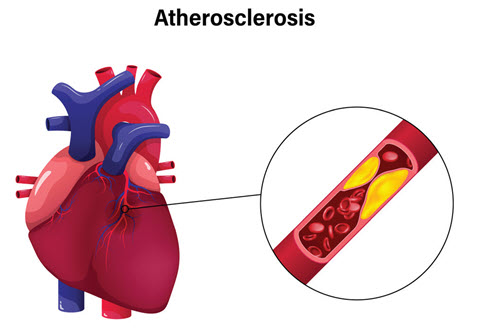Follow 3 Handy Tips to Simplify Your Atherosclerosis Coding
Report 92943 and +92944 for chronic total occlusion. In the session “Cardiovascular Pathophysiology Diagnostics and Therapeutic Procedures” during Regional HEALTHCON 2022, speaker Tyler Griffeth, CPC, CPRC, coding consultant at Intermountain Healthcare, discussed many types of cardiovascular diseases and treatment options. For example, he identified the different types of atherosclerosis and what procedures your cardiologist may perform to treat this disease. Take a look at all you need to know when reporting atherosclerosis to keep your claims in tip-top shape. Tip 1: Pinpoint Atherosclerosis ICD-10-CM Codes When a patient has atherosclerosis, the walls of their arteries lose flexibility and elasticity, Griffeth said. Then, deposits form in the arteries, which slowly narrows them. Risk factors for atherosclerosis include smoking, being sedentary, poor diet, family history, according to Griffeth. ICD-10-CM offers many coding options for atherosclerosis, including the following: Tip 2: Understand Atherosclerotic Disease Treatment Options Your cardiologist has a hierarchy of treatment options for atherosclerotic disease that have to do with revascularization, Griffeth said. You will find a huge section in the CPT® code book that includes procedures 34001 (Embolectomy or thrombectomy, with or without catheter; carotid, subclavian or innominate artery, by neck incision) through 37799 (Unlisted procedure, vascular surgery). Your cardiologist may perform percutaneous coronary interventions, which are codes 92920 (Percutaneous transluminal coronary angioplasty; single major coronary artery or branch) through +92934 (Percutaneous transluminal coronary atherectomy, with intracoronary stent, with coronary angioplasty when performed; each additional branch of a major coronary artery (List separately in addition to code for primary procedure)), according to Griffeth. Your cardiologist may also perform percutaneous coronary interventions with 92937 (Percutaneous transluminal revascularization of or through coronary artery bypass graft (internal mammary, free arterial, venous), any combination of intracoronary stent, atherectomy and angioplasty, including distal protection when performed; single vessel) and +92938 (… each additional branch subtended by the bypass graft (List separately in addition to code for primary procedure)), says Robin Peterson, CPC, CPMA, manager of professional coding services, Pinnacle Integrated Coding Solutions, LLC in Centennial, Colorado. Additionally, your cardiologist may need to perform percutaneous transluminal revascularization during an acute myocardial infarction. You should report this with 92941 (Percutaneous transluminal revascularization of acute total/subtotal occlusion during acute myocardial infarction, coronary artery or coronary artery bypass graft, any combination of intracoronary stent, atherectomy and angioplasty, including aspiration thrombectomy when performed, single vessel). Your cardiologist will perform a 92941 procedure during a heart attack, so this is an emergency procedure, Griffeth said. If your physician reports this code, make sure they are talking about the patient’s condition being emergent and during an acute phase of the myocardial infarction (AMI). Chronic total occlusion: If you report percutaneous transluminal revascularization of chronic total occlusion, submit codes 92943 (Percutaneous transluminal revascularization of chronic total occlusion, coronary artery, coronary artery branch, or coronary artery bypass graft, any combination of intracoronary stent, atherectomy and angioplasty; single vessel) and +92944 (… each additional coronary artery, coronary artery branch, or bypass graft (List separately in addition to code for primary procedure)), according to Griffeth. Your physician’s documentation for chronic total occlusion needs to specify both “chronic” and “total,” Griffeth said. Tip 3: Break Down Revascularization Hierarchy Revascularization procedures do three major things, and they are arranged in a hierarchy as follows, according to Griffeth. Angioplasty: Angioplasty is on the lowest level of the totem pole, Griffeth said. This is the first procedure a cardiologist will usually try. During an angioplasty, the physician will insert the balloon in a narrowed area. They will inflate the balloon, flattening the plaque. Then, the artery is widened, and blood flow is improved. If all your cardiologist performs is an angioplasty, then this is all you code for, Griffeth cautions. Atherectomy: Next on the totem pole is atherectomy, according to Griffeth. This is when the cardiologist goes into where the blockage is located and grinds it out. Griffeth said he sees atherectomies least often. If your cardiologist tries a balloon, and it doesn’t work, and then they use atherectomy, you should only code for the atherectomy, Griffeth explained. Of course, if your cardiologist goes straight to the atherectomy, that is the only procedure you should code. Stenting: Stenting is king, Griffeth said. “What I see most often is that they will try a balloon angioplasty, and doesn’t work, so then they will add in a stent.”





